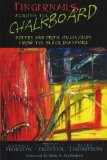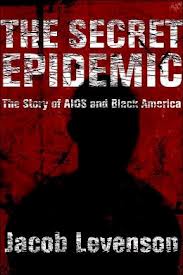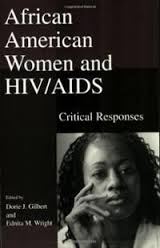|
FIRST SUNDAY OF ADVENT/WORLD AIDS DAY
CULTURAL RESOURCES
Sunday, December 1, 2013
Mashaun D. Simon, Guest Cultural Resource Commentator
Writer, preacher, teacher, and scholar from Atlanta, Georgia, and licensed to preach in the African Methodist Episcopal Church, 6th district
Scripture: Isaiah 59:14-16
I. Introduction
World AIDS Day is a global effort. Recognized on December 1, the day is set aside to focus the world's attention on the pandemic of AIDS and its impact on us all across the globe.
World AIDS Day was established in 1988. One of the organizers, James Bunn, a broadcast journalist on leave from his job, believed the December 1 date was far enough from the 1988 national election and given Christmas was 24 days away, the media would be looking for something fresh to cover. So, the December 1 date would maximize media attention, which was necessary in order to bring attention to this global issue. In June 1981, the first cases of the virus, which would eventually become known as AIDS, collided with our consciousness. Since then, more than 619,000 people with AIDS in the U.S. have died and more than 25 million have died of AIDS complications worldwide, according to AIDS.gov.1 In 2011, there were 1.7 million reported death from AIDS (230,000 were children).2
The word Advent comes from the Latin word advenio, "to come to," and refers to the coming of Christ. This refers, first of all, to our celebration of Christ's birth at Christmas; second, to the coming of Christ in our lives through grace; and finally, to His Second Coming at the end of time. Therefore, the season of Advent is set aside to celebrate the coming birth of Jesus, as we live as though we have accepted Christ as Savior, and anticipate his return. Through Jesus, God reconciles with the world, bringing God's creation back into relationship with not only God but with one another. During the Advent season, we are reminded of that hope. The First Sunday of Advent can fall as early as November 27 or as late as December 3.
Combining World AIDS Day with the First Sunday of Advent on the Lectionary calendar is quite fitting. Oftentimes those living with HIV/AIDS are overlooked and ignored by society and even the Church. As Christians, we are taught to live a life of truth telling, justice, and righteousness, taking our examples from Jesus, his life, and his ministry. On this First Sunday of Advent/World AIDS Day, not only can preachers bring greater awareness of the impact that AIDS is having across the world, but they can also inspire members of the Christian family to recommit themselves to working and living for righteousness and justice, as we recognize the "coming" of Christ in its fullest sense.
II. History and What Black Churches Can Offer
It is no secret that the Black Church has a rich history of being a foundational institution that has played a major role in the advancement and development of the Black community. The Black Church was at the forefront of slave emancipation and played a significant role in the modern Civil Rights Movement. However, the Black Church has been critiqued heavily for its inability to timely and adequately respond to the HIV/AIDS epidemic.
Anthony Pinn provides his critique in The Black Church in the Post-Civil Rights Era. He explains that while the church has responded to issues like the drug epidemic, historically the HIV/AIDS epidemic has not been as unilaterally addressed. Part of the reason is due to the theological problems of HIV/AIDS for the church, including "the rather faulty ontology of AIDS fixed on sexual conduct embraced by most."3 For black churches, AIDS presents an array of complexities between sin and salvation, lifestyle and personal responsibility, faith and healing, etc.
However, the work of Pernessa Seele and her organization, The Balm in Gilead, is leading the way in educating black churches on the HIV/AIDS epidemic. The Balm in Gilead's purpose is to "improve the health status of people of the African Diaspora by building the capacity of faith communities to address life-threatening diseases, especially HIV/AIDS in the United States and in Africa."4 Seele's work has motivated churches to action. And today, numerous black churches across the country, such as Trinity United Church of Christ in Chicago and Enon Tabernacle Baptist Church in Philadelphia, have developed exemplary ministries and/or turned their attention to the AIDS epidemic. Black churches have a responsibility to provide care for communities. This certainly means responding to and working to overcome the HIV/AIDS epidemic.5
III. Autobiography
My brother used to do this thing for me. Whenever he would pick me up for a weekend, he would oblige my request and take back roads from my parents' house in Decatur to his house near Hartsfield-Jackson Atlanta International Airport. Today, some 20-plus years later, my brother's way of spoiling me still resonates.
As a little kid, I never really liked the expressway. Yes, I understood its convenience. However, I found it limiting and boring. All you saw were other cars and signs. By taking the back roads, I could see people in so many phases of everyday life. During our drives, I had the chance to experience people catching up with friends in the parking lots of neighborhood gas stations. During our rides, I witnessed young people dancing to their favorite songs on the radio, kids playing tag or catch in their yards, and adults sitting on their porches gossiping, laughing, or taking a nap.
Maybe I was being nosey. And maybe it was too much for a young pre-teen to ask of his older brother. But those drives allowed me to experience the world. And those drives prolonged what little time we had together.
I first became introduced to HIV/AIDS as a pre-teen when my beloved brother, Hollis O. Simon, II, was diagnosed. I had heard the whispers around the house, but for some reason everyone had been very careful to keep me protected. Unbeknownst to me my brother was fighting for his life in a hospital bed. He was being treated for pneumonia in a downtown Atlanta hospital.
Our weekend visits would become a constant almost as soon as he was released from the hospital. It was our way of making the most of what time we had left together.
A couple of years would pass before he would develop full-blown AIDS. He died from complications of HIV/AIDS on November 30, 1992 at the age of 33. I was just 13. I mourned the loss of my brother well into my 20s. As I overcame the pain of my brother's loss, I would soon find myself re-introduced to the disease when several associates and friends would become diagnosed with HIV. However, science had advanced by then; the virus was no longer an automatic death sentence. People with HIV or AIDS are now living full and productive lives.
What my experience with my brother taught me is to savor every moment. What my friends are teaching me is to live on purpose. I am reminded of the importance of living life to the fullest, the importance of knowing one's status, and working to combat this epidemic ravaging the black community and the world.
The anniversary of my brother's death falls on the weekend of World AIDS Day. For my part, I am sure to get tested. I have yet to miss a test, not because I am afraid I may be at risk—not at all. But I do it as a means of practicing self-care and proactive health care. And, in some odd way, it keeps my brother's memory alive. It is my way of ensuring that he did not die—or live—in vain.
IV. Songs That Speak to the Moment
Borrowing from the some of the key words and themes in today's Isaiah text, there are numerous songs that come to mind in recognition of the First Sunday of Advent/World AIDS Day. Below are just a few to consider. The first is "Koinonia," written by V. Michael McKay. In it, the writer asks a simple question: How can one say they love the Lord, whom they have never met, but ignore the ones they see every day? It is a fitting song to engage the importance of loving one another and fighting for those around us. The second song, "There Is a Balm in Gilead," speaks to the encouragement needed by God to keep working and fighting even when the work seems in vain. The third song, "Renew Thy Church, Her Ministries Restore," written by Kenneth L. Cober, has themes of being "salt of the land" and speaks of God sending Jesus and of seeking God's guidance. These themes all speak to the church being a force of justice, leadership, and direction during the Advent Season and all year long.
Koinonia
by V. Michael McKay
How can I say that I love the Lord who I've never, ever seen before;
and forget to say that I love the one whom I walk beside each and ev'ry day?
How can I look upon your face and ignore God's love?
You I must embrace!
You're my brother; you're my sister; and I love you with the love of my Lord.
(Repeat)6
There Is a Balm in Gilead
Negro spiritual
Refrain:
There is a balm in Gilead
To make the wounded whole;
There is a balm in Gilead
To heal the sin-sick soul.
Sometimes I feel discouraged
And think my work's in vain,
But then the Holy Spirit
Revives my soul again.
Refrain
Don't ever be discouraged,
For Jesus is your friend;
And if you lack for knowledge,
He'll ne'er refuse to lend.
Refrain
If you cannot preach like Peter,
If you cannot pray like Paul,
You can tell the love of Jesus,
And say, "He died for all!"
Refrain7
Renew Thy Church, Her Ministries Restore
by Kenneth L. Cober
Renew Thy church, her ministries restore:
Both to serve and adore.
Make her again as salt throughout the land,
And as light from a stand.
'Mid somber shadows of the night
Where greed and hatred spread their blight,
O send us forth with pow'r endued:
Help us, Lord, be renewed!
Teach us Thy Word, reveal its truth divine;
On our path let it shine.
Tell of Thy works, Thy mighty acts of grace;
From each page show Thy face.
As Thou hast loved us, sent Thy Son,
And our salvation now is won,
O let our hearts with love be stirred:
Help us, Lord, know Thy word!
Teach us to pray, for Thou art ever near;
Thy still voice let us hear.
Our souls are restless till they rest in Thee:
This our glad destiny.
Before Thy presence keep us still,
That we may find for us Thy will
And seek Thy guidance ev'ry day:
Teach us, Lord, how to pray!
Teach us to love, with strength of heart and mind,
Ev'ryone, all mankind.
Break down old walls of prejudice and hate;
Leave us not to our fate.
As Thou hast loved and giv'n Thy life
To end hostility and strife,
O share Thy grace from heav'n above:
Teach us, Lord, how to love!8
V. Audio Visual Aids
VI. Making It a Memorable Learning Moment
Books to Enhance Your Understanding of HIV/AIDS
 |
Randall Horton, M. L. Hunter, and Becky W. Thompson. Fingernails across the Chalkboard: Poetry and Prose on HIV/AIDS from the Black Diaspora. Chicago, IL: Third World, 2007. |
 |
Levenson, Jacob. The Secret Epidemic: The Story of AIDS and Black America. New York, NY: Anchor, 2005. |
 |
Gilbert, Dorie J. and Ednita M. Wright. African American Women and HIV/AIDS: Critical Responses. Westport, CT: Praeger, 2003. |
Additional Suggestions
(a) Hold HIV/AIDS listening services throughout the year.
Many are not involved in the fight against HIV/AIDS because they are poorly informed. During the Advent season and next year, hold periodic "Listening Services" so that those in your church can hear from persons in your community, your state, and your congregation about living with HIV/AIDS and how to stop its spread.
(b) Hold a special worship service for persons with HIV/AIDS.
Have your Worship and Arts Department design a special HIV/AIDS service to be held during Advent this year or next year. Lectionary Young Adult Liturgist Charles Cotton has prepared a special worship service for women suffering with HIV/AIDS. His "Power in the Blood: A Service for Women Infected with HIV/AIDS" can be found in the Young Adult Liturgists' section of the African American Lectionary at http://www.theafricanamericanlectionary.org/yalcarticles.asp. This service is an example of the type of service that can be designed. Be creative and inclusive. Also, be sure to advertise your service using all forms of available media, especially Facebook, Twitter, and your local news and radio stations.
(c) Connect with a local HIV/AIDS awareness-testing agency (like AID Atlanta, etc.) to hold a day of free/confidential testing at your church during (or after) the Sunday worship service.
Contact information for national groups working to end HIV/AIDS
(a) Balm in Gilead
4108 Parham Road
Richmond, VA 23228
Local: 804-644-2256
Toll Free: 888-225-6243
E-mail: info@balmingilead.org
http://www.balmingilead.org/.
(b) NAACP
National Headquarters
4805 Mt. Hope Drive
Baltimore, MD 21215
Local: 410-580-5777
Toll Free: 877-NAACP-98
See http://www.naacp.org/press/entry/naacp-tackles-african-american-hiv-aids-crisis
(c) Centers for Disease Control and Prevention (CDC)
1600 Clifton Road
Atlanta, GA 30333
Phone: 1-800 CDC-INFO (800-232-4636)
E-mail: cdcinfo@cdc.gov
The CDC website maintains up-to-date facts about HIV/AIDS, treatments, and ways to reach under-served communities: http://www.cdc.gov/hiv/topics/aa/
Notes
1. "U.S. Statistics." Online location: http://aids.gov/hiv-aids-basics/hiv-aids-101/statistics/ (accessed 4 April 2013).
2. "Global Statistics." Online location: http://aids.gov/hiv-aids-basics/hiv-aids-101/global-statistics/index.html (accessed 4 April 2013). Also see "World Health Organization: Global Summary of the AIDS Epidemic: 2011." Online location: http://www.who.int/hiv/data/2012_epi_core_en.png (accessed 5 April 2013).
3. Pinn, Anthony. The Black Church in the Post-Civil Rights Era. Maryknoll, NY: Orbis Books, 2002.
4. The Balm in Gilead: http://www.balmingilead.org/.
5. The Grio.com. "Why the black church must get real on HIV/AIDS." Online location: http://thegrio.com/2011/08/16/churches-must-get-real-on-hiv-aids/ (accessed 5 April 2013).
6."Koinonia." Text and Tune by V. Michael McKay. African American Heritage Hymnal. Chicago, IL: GIA Publications, 2001. #579
7. "There Is a Balm in Gilead." Negro Spiritual. African American Heritage Hymnal. #524
8."Renew Thy Church, Her Ministries Restore." By Kenneth L. Cober. African American Heritage Hymnal. #343
|